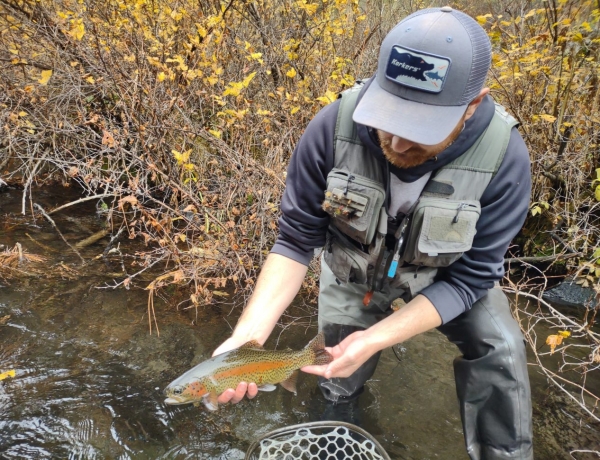Egg patterns are a winter staple around Central Oregon. Whitefish, salmon, and suckers spawn this time of year and fill our rivers with nutrient rich food that the trout go crazy for- and we can imitate it! Egg flies have been around for years and are tied with a variety of materials, but a few recent versions have jumped to the top of the list for their ease of tying, durability, and tendency to clean up on any body of water with a spawn or hatchery fish. Here’s our favorite recipe for the modern egg fly, and how you can add these to your box.
Note- We also tie these eggs for the shop, so if you don’t tie or just want to take a look at the patterns they’ll be here for you!
Body
Egg yarn chenille has by far become the most popular “body” material for egg patterns. It takes on a great gel-like look when wet that fish love, and holds together better than any type of loose foam or yarn. On the tying side, a couple wraps after a thread base is all you need. The low amount of chenille you use on each fly also makes the material last forever. You can easily fill a small box with egg flies on one bag of the stuff.
Hook
Realistically, any small nymph hook will do the trick (we usually tie on hooks between #16-#12), but jig hooks are superior. They ride hook point up, which helps deter snagging as you run these flies along the bottom. The shorter shank allows you to cover more of the hook with a few wraps of egg chenille. Jig hooks also have wider gaps, which improves your hookup potential.
Bead
Use slotted tungsten beads on your jig hooks. If you want to get really fancy, match the bead color to the chenille yarn.
It’s that simple! We carry all of the materials mentioned here at the shop, and can point you in the right direction for the different hook/bead sizes you’ll need for wherever you’re fishing. As always, come by with any questions!


